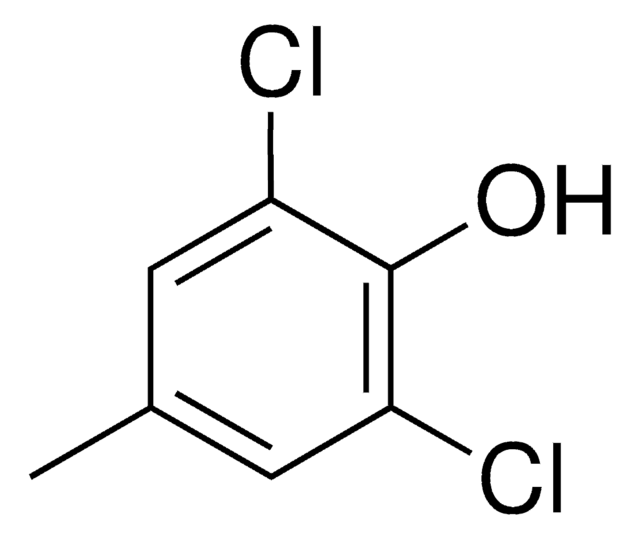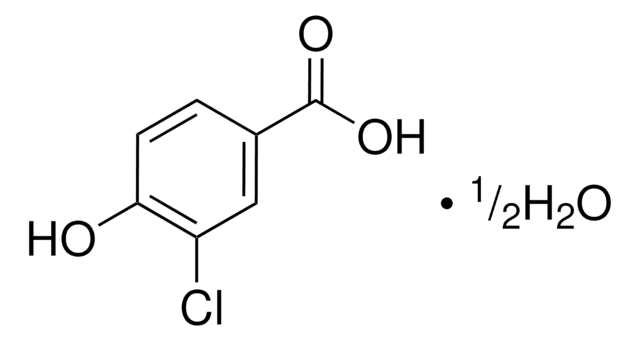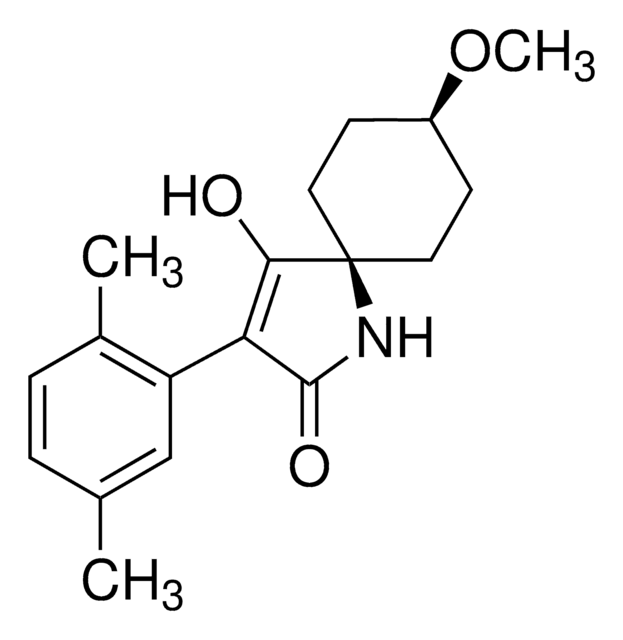おすすめの製品
アッセイ
97%
形状
powder
mp
264-266 °C (lit.)
SMILES記法
OC(=O)c1cc(Cl)c(O)c(Cl)c1
InChI
1S/C7H4Cl2O3/c8-4-1-3(7(11)12)2-5(9)6(4)10/h1-2,10H,(H,11,12)
InChI Key
AULKDLUOQCUNOK-UHFFFAOYSA-N
シグナルワード
Warning
危険有害性情報
危険有害性の分類
Eye Irrit. 2 - Skin Irrit. 2 - STOT SE 3
ターゲットの組織
Respiratory system
保管分類コード
11 - Combustible Solids
WGK
WGK 3
引火点(°F)
Not applicable
引火点(℃)
Not applicable
個人用保護具 (PPE)
dust mask type N95 (US), Eyeshields, Gloves
適用法令
試験研究用途を考慮した関連法令を主に挙げております。化学物質以外については、一部の情報のみ提供しています。 製品を安全かつ合法的に使用することは、使用者の義務です。最新情報により修正される場合があります。WEBの反映には時間を要することがあるため、適宜SDSをご参照ください。
Jan Code
D64007-100G:
D64007-VAR:
D64007-BULK:
D64007-25G:
D64007-5G:
Yasuhiro Kambayashi et al.
Journal of clinical biochemistry and nutrition, 44(1), 95-103 (2009-01-30)
(Di)bromotyrosine is formed by the specific reaction of eosinophil peroxidase and can be used as an eosinophil activation marker. In the present study, an antibody for (di)bromotyrosine in proteins was prepared to investigate the pathogenesis of eosinophil-related diseases such as
Karoline Estefani Duarte et al.
Scientific reports, 9(1), 4028-4028 (2019-03-13)
Abscisic acid (ABA) is an essential phytohormone that regulates growth, development and adaptation of plants to environmental stresses. In Arabidopsis and other higher plants, ABA signal transduction involves three core components namely PYR/PYL/RCAR ABA receptors (PYLs), type 2C protein phosphatases
Debora Giordano et al.
Food chemistry, 301, 125228-125228 (2019-08-05)
Hexaploid tritordeum is the amphidiploid cereal derived from the cross between wild barley and durum wheat. The present study compares two cultivars of tritordeum with other cereals grown in the same experimental area to weigh up its potential use as
Michael F Wempe et al.
Drug design, development and therapy, 6, 323-339 (2012-11-16)
Human uric acid transporter 1 (hURAT1; SLC22A12) is a very important urate anion exchanger. Elevated urate levels are known to play a pivotal role in cardiovascular diseases, chronic renal disease, diabetes, and hypertension. Therefore, the development of potent uric acid
Zhenxuan Zhang et al.
Water research, 170, 115283-115283 (2019-11-19)
Halogenated aromatic disinfection byproducts (DBPs) are a new group of emerging DBPs identified recently. They have been detected in disinfected drinking water, wastewater effluents, recreational water and oil/gas produced water, at concentrations of ng/L to μg/L in general. Previously studies
ライフサイエンス、有機合成、材料科学、クロマトグラフィー、分析など、あらゆる分野の研究に経験のあるメンバーがおります。.
製品に関するお問い合わせはこちら(テクニカルサービス)









